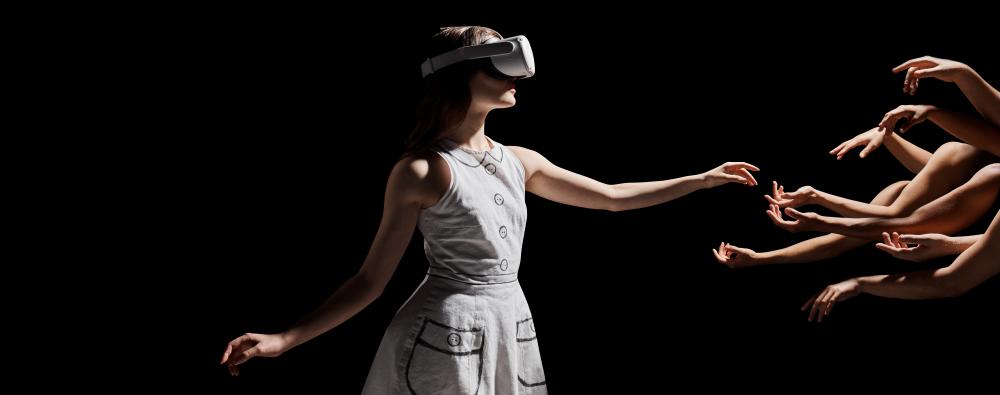Community, Leadership, Experimentation, Diversity, & Education
Pittsburgh Arts, Regional Theatre, New Work, Producing, Copyright, Labor Unions,
New Products, Coping Skills, J-O-Bs...
Theatre industry news, University & School of Drama Announcements, plus occasional course support for
Carnegie Mellon School of Drama Faculty, Staff, Students, and Alumni.
CMU School of Drama
Monday, April 04, 2022
‘Two years ago it was impossible’: how tech turns dance into a multisensory fantasy
Dance | The Guardian: I’m in an abandoned-looking house, where a woman appears like a dancing apparition. Then I’m going down a rabbit hole into a tea party in a bright yellow field. I’m conducting avatars moving to Stravinsky’s Rite of Spring; taking part in a dance class where the teacher is a hologram; arriving at a grand Parisian party dressed in Chanel.
Subscribe to:
Post Comments (Atom)

4 comments:
The evolution of technology will forever be interesting to me. Living in modern society, we are constantly coming out with new and updated ways of enchanting the environment we are in through electronics. Incorporating these machines/technology/tools into performance is a fantastic way to explore past the boundaries of what we previously thought was possible for creating art. So, whenever I see new there is technology out, I love to research it. It is also important to have a solid understanding of all the technology one could encounter when working, something that becomes very overwhelming for me when technology is being produced so quickly. I often contemplate how something can get more advanced, and somehow, it also does. You are constantly learning, adapting, and changing in this industry. Which is super exciting! It is something I love, that you always have to push yourself to grow as an artist.
I’ve always admired how much forward motion exists in the world of design for dance performances. Theater is often regarded as a supremely fast changing industry, and it definitely is, but often it finds niches of technology and explores everything they can do with that technology before they move on to something else. Dance seems to plunge ahead into murky waters like a javelin thrown by a titan. Even this article notes that the technology isn't perfect and is even badly developed in some places, but it IS interesting and exciting. There’s no way to move forward into a new age of theater without moving forward, even if it is rocky and challenging for a while. I wish theater could do this, but so often theater has become a for profit industry that must follow modern trends to make money instead of experimenting with something new, perhaps theater should idolize dance.
The coolest part of this is that you can interact with other people,I didn’t even know that was possible with virtual reality. This is just so fascinating technically. Also I feel like balls are such a thing of the past, unfortunately no one is hosting a ball anymore. Then to mix that ideas of antiquity with this very new kind of VR is such a good way to create contrast. I think that the tech of this experience is obviously so cool, but I think that the best part of any kind of theatrical experience is the liveness, everything is done by real people. It can be a little disheartening to only see people in a virtual way. Another interesting part was that they got Channel to create the outfits for the characters with in the VR, that is a pretty huge collaboration. This kind of reminds me of something that I have also seen in the news, which is virtual fashion, which I just don’t care for because clothes are all about tactility for me.
The first phrase in this article that really stood out to me was where it talked about being present in the room with the dancers, with the art that has been put on instead of being separate and watching them on a phone or a very small video screen. Thinking about this had some interesting implications for theatrical productions, at least traditional ones like what we do here, as a whole. The way I see it, there is still some removal between the people in the seats, especially if they are sitting very far in the back of the room and the actors on stage and using AR or VR as a way to bring audiences in could also be an incredibly powerful tool for us to break and remake the expectations audiences have of boundaries between them and the play. Same with their audiences interacting with each other, and especially if the performers are not live perhaps allowing a larger sense of audience community where they can interact and feed of each other without disrupting the show is an interesting idea.
Post a Comment